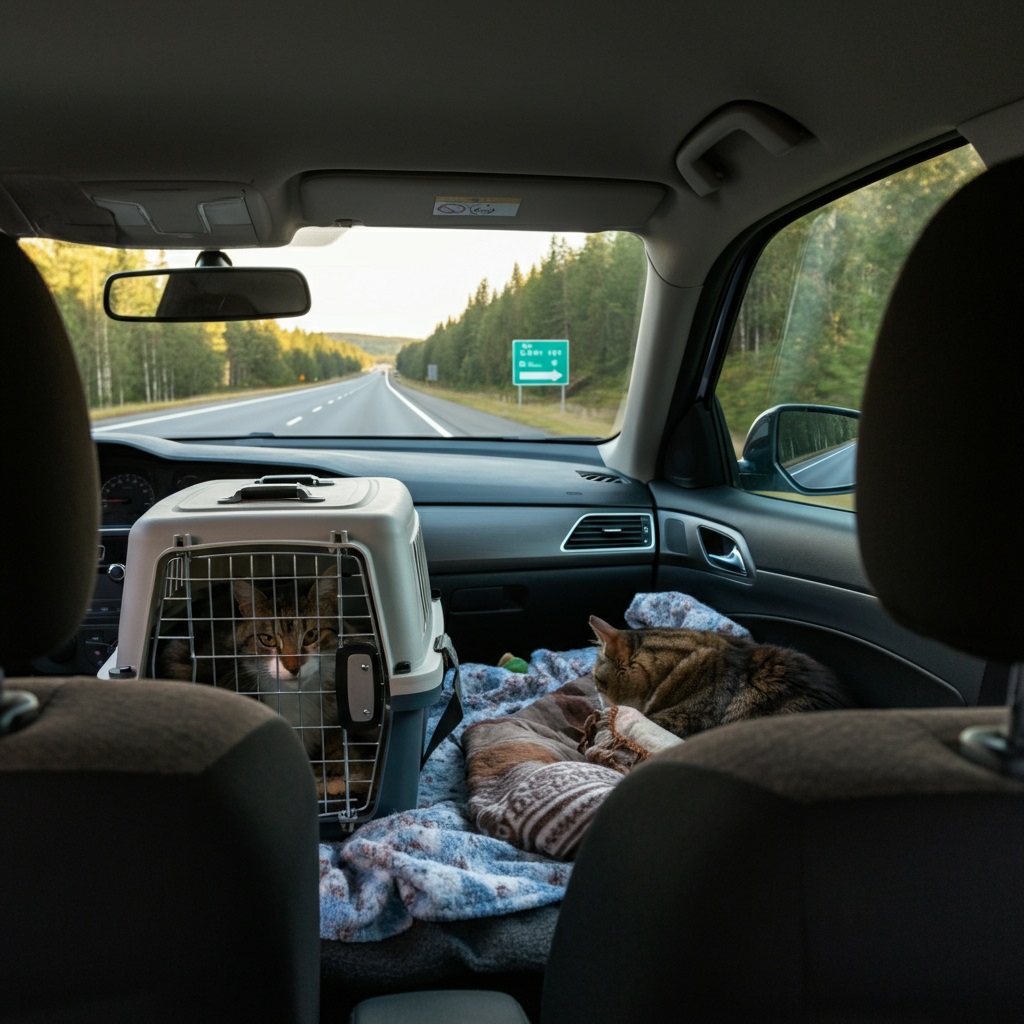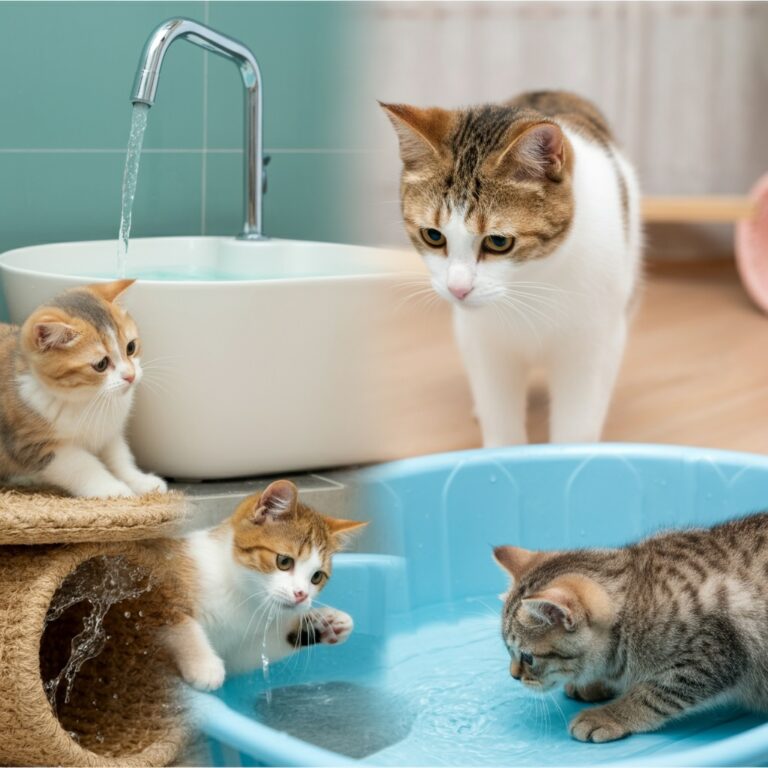
Moving across the country with your feline friend? Planning a cross-country road trip that includes your beloved cat? Long-distance travel with cats requires careful preparation, but with the right approach, you can ensure your pet arrives safely and comfortably at your destination.
Cats are naturally territorial creatures who thrive on routine and familiar environments. Unlike dogs, who often enjoy car rides and new experiences, most cats find travel stressful. However, millions of pet owners successfully relocate with their cats every year, and with proper planning, your journey can go smoothly too.
This comprehensive guide will walk you through everything you need to know about traveling long distances with your cat, from pre-trip preparations to arrival at your destination. Whether you’re driving across several states or flying internationally, these strategies will help minimize stress for both you and your feline companion.
Preparing Your Cat for Long-Distance Travel
Start Planning Early
Begin preparing for your trip at least 4-6 weeks in advance. This gives you time to gradually acclimate your cat to their carrier, complete necessary veterinary visits, and gather all required documentation.
Schedule a veterinary checkup to ensure your cat is healthy enough for travel. Discuss your travel plans with your vet, who may recommend anti-anxiety medication or other strategies based on your cat’s temperament and health status.
Choose the Right Carrier
Your cat’s carrier is their safe haven during travel. For long-distance trips, invest in a high-quality, well-ventilated carrier that’s large enough for your cat to stand, turn around, and lie down comfortably.
Hard-sided carriers offer better protection during car accidents or turbulence on flights. Soft-sided carriers work well for calm cats on road trips but may not be suitable for airline travel. Ensure the carrier has secure latches, proper ventilation, and comfortable bedding.
Carrier Training Is Essential
Most cats associate their carrier with vet visits, making it a source of anxiety. Change this association by leaving the carrier out in your home with the door open. Place treats, favorite toys, or meals inside to create positive associations.
Start with short car rides around the block, gradually increasing the duration. This helps your cat become comfortable with the motion and sounds of travel. Some cats adapt quickly, while others may need several weeks of gradual conditioning.
Planning Your Route and Stops
Map Out Pet-Friendly Accommodations
If your journey requires overnight stays, research pet-friendly hotels along your route. Many hotel chains welcome cats, but policies vary by location. Book accommodations in advance, especially during peak travel seasons.
Call hotels directly to confirm their pet policies, including size restrictions, pet fees, and any required documentation. Some hotels offer special amenities for traveling pets, such as food bowls, litter boxes, or designated pet relief areas.
Plan Regular Breaks
Cats need opportunities to use the litter box, eat, and drink during long trips. Plan stops every 3-4 hours, choosing safe locations away from busy roads. Never leave your cat unattended in a parked vehicle, as temperatures can become dangerous quickly.
Pack a portable litter box, familiar food, and fresh water for each stop. Some cats may be too stressed to eat or drink during travel, but having these essentials available is crucial.
Consider Your Cat’s Personality
Anxious cats may benefit from shorter travel days with more frequent stops. Confident, adaptable cats might handle longer stretches better. Adjust your itinerary based on your cat’s individual needs and stress tolerance.
Essential Supplies for Long-Distance Cat Travel
Documentation and Health Records
Keep your cat’s vaccination records, health certificates, and any required travel documentation easily accessible. Some states require health certificates for pets crossing state lines, and international travel always requires specific veterinary documentation.
Carry a recent photo of your cat and ensure they’re wearing a collar with updated identification tags. Microchipping provides additional security if your cat becomes separated from you during travel.
Comfort Items and Supplies
Pack familiar items that smell like home, such as a favorite blanket or toy. These comfort objects can help reduce anxiety in unfamiliar environments.
Bring enough of your cat’s regular food for the entire trip, plus extra in case of delays. Sudden dietary changes can cause digestive upset, adding unnecessary stress to an already challenging situation.
Essential supplies include:
- Litter box and familiar litter
- Food and water bowls
- Leash and harness for safe outdoor time
- Waste bags for cleanup
- First aid kit with basic supplies
- Any medications your cat takes regularly
Safety and Security Measures
Invest in a GPS collar or tracker if your cat tends to hide or escape when stressed. These devices can be invaluable if your pet goes missing in an unfamiliar location.
Pack extra carriers or secure containers in case the primary carrier becomes damaged. Having backup options ensures your cat remains safely contained throughout the journey.
Continues after advertising
Traveling by Car vs. Flying
Road Trip Considerations
Driving offers more control over your cat’s environment and schedule. You can take breaks as needed, maintain familiar routines, and keep your cat’s supplies easily accessible.
Secure the carrier with seat belts or place it on the floor behind the front seats where it won’t slide during turns or stops. Never allow your cat to roam freely in the vehicle, as this creates safety hazards for both you and your pet.
Keep the car at a comfortable temperature and avoid playing loud music that might increase your cat’s stress. Some cats find soft classical music or white noise calming during travel.
Air Travel Logistics
Flying requires more advance planning but can be less stressful for cats who adapt quickly to new environments. Most cats must travel in the cabin with you, as cargo holds can be dangerous for pets.
Check airline policies well in advance, as each carrier has specific requirements for pet travel. Some airlines limit the number of pets per flight, so book early to secure space.
Arrive at the airport early to allow extra time for security screening. Your cat will need to be removed from their carrier during security checks, so practice this process at home beforehand.
Managing Stress and Anxiety During Travel
Natural Calming Methods
Pheromone sprays can help create a calming environment in your cat’s carrier. These synthetic versions of natural cat pheromones can reduce anxiety without medication side effects.
Maintain as normal a routine as possible during travel. Feed your cat at regular times and speak to them in soothing tones throughout the journey.
When to Consider Medication
Some cats experience severe travel anxiety that natural methods can’t address. Your veterinarian may recommend anti-anxiety medication for particularly stressful journeys.
Never give your cat human medications or over-the-counter pet sedatives without veterinary supervision. Some medications can be dangerous for cats, especially during travel when they need to remain alert.
Recognizing Signs of Distress
Watch for excessive panting, drooling, vomiting, or elimination outside the litter box. While some stress is normal during travel, severe symptoms may indicate your cat needs immediate attention.
Pull over safely if your cat shows signs of serious distress. Offer water and comfort, and contact your veterinarian if symptoms persist or worsen.
Settling In at Your Destination
Creating a Safe Space
Upon arrival, set up a quiet room with your cat’s familiar belongings before letting them explore their new environment. This gives them a secure base while they adjust to new surroundings.
Keep your cat indoors for at least two weeks after moving to prevent them from trying to return to their previous home. Even indoor cats may attempt to find their old territory if allowed outside too soon.
Helping Your Cat Adjust
Maintain familiar routines around feeding, play, and sleep times. Consistency helps cats feel secure in new environments.
Gradually introduce your cat to different rooms in your new home, allowing them to explore at their own pace. Some cats adjust within days, while others may need weeks to feel completely comfortable.
When Long-Distance Travel Isn’t Right for Your Cat
Health Considerations
Senior cats, those with chronic health conditions, or cats with severe anxiety disorders may not be good candidates for long-distance travel. Consult your veterinarian about alternatives if your cat falls into these categories.
Pregnant cats or those with very young kittens should avoid unnecessary travel when possible. The stress of long journeys can complicate pregnancies or affect nursing mothers’ milk production.
Alternative Arrangements
Professional pet transport services specialize in long-distance pet relocation and may be worth considering for cats who don’t travel well. These services provide experienced handlers and climate-controlled vehicles designed for pet comfort.
Temporary boarding with trusted friends or professional pet sitters might be preferable for short-term relocations or vacations. This option allows your cat to remain in familiar territory while you’re away.
Read More👉 What Your Pet’s Poop Can Tell You About Their Health
Making Your Journey a Success
Long-distance travel with cats requires patience, preparation, and flexibility. Every cat responds differently to travel, so be prepared to adjust your plans based on your pet’s needs.
Start your preparations early, invest in quality supplies, and don’t hesitate to consult with your veterinarian throughout the planning process. With careful preparation and the right approach, you and your feline friend can successfully navigate even the longest journeys together.
Remember that the temporary stress of travel is often worth it to keep your beloved cat with you during major life changes. Many cats who initially struggle with travel become more adaptable over time, making future journeys easier for everyone involved.






